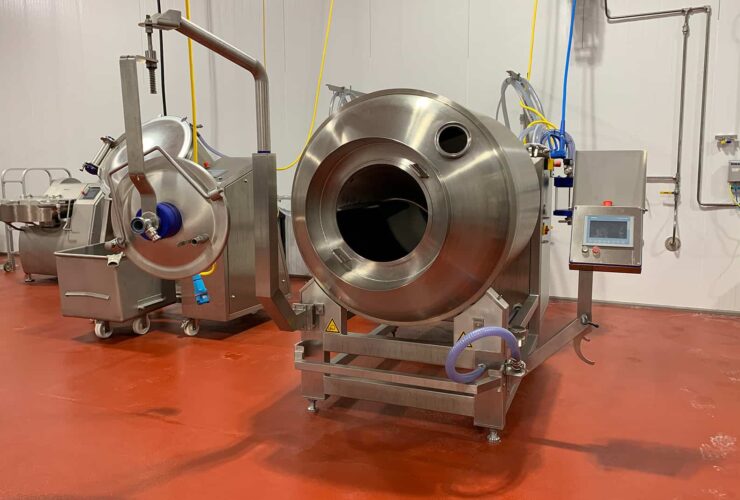10 years of experience as a food machinery equipment manufacturer
10 years of experience as a food machinery equipment manufacturer
Commercial Vacuum Meat Tumblers: An Overview of Manufacturing and Applications

In the realm of food processing, commercial vacuum meat tumblers play a pivotal role in enhancing the quality, flavor, and texture of various meat products. These machines are integral to meat processing factories, streamlining production and ensuring consistent results. This article explores the manufacturing processes involved in creating commercial vacuum meat tumblers and their diverse applications.
The production of commercial vacuum meat tumblers involves a combination of engineering precision, materials science, and manufacturing expertise. Here’s a look at the key stages:
Commercial vacuum meat tumblers are used across a broad spectrum of meat processing applications, each leveraging the machine’s capabilities to enhance product quality and efficiency.
The adoption of commercial vacuum meat tumblers offers several significant advantages for meat processing businesses:
In conclusion, commercial vacuum meat tumblers are indispensable tools in modern meat processing facilities. Their sophisticated design, robust construction, and diverse applications contribute significantly to the quality, consistency, and efficiency of meat production. As consumer demand for flavorful, high-quality meat products continues to grow, the role of these machines will only become more critical.
